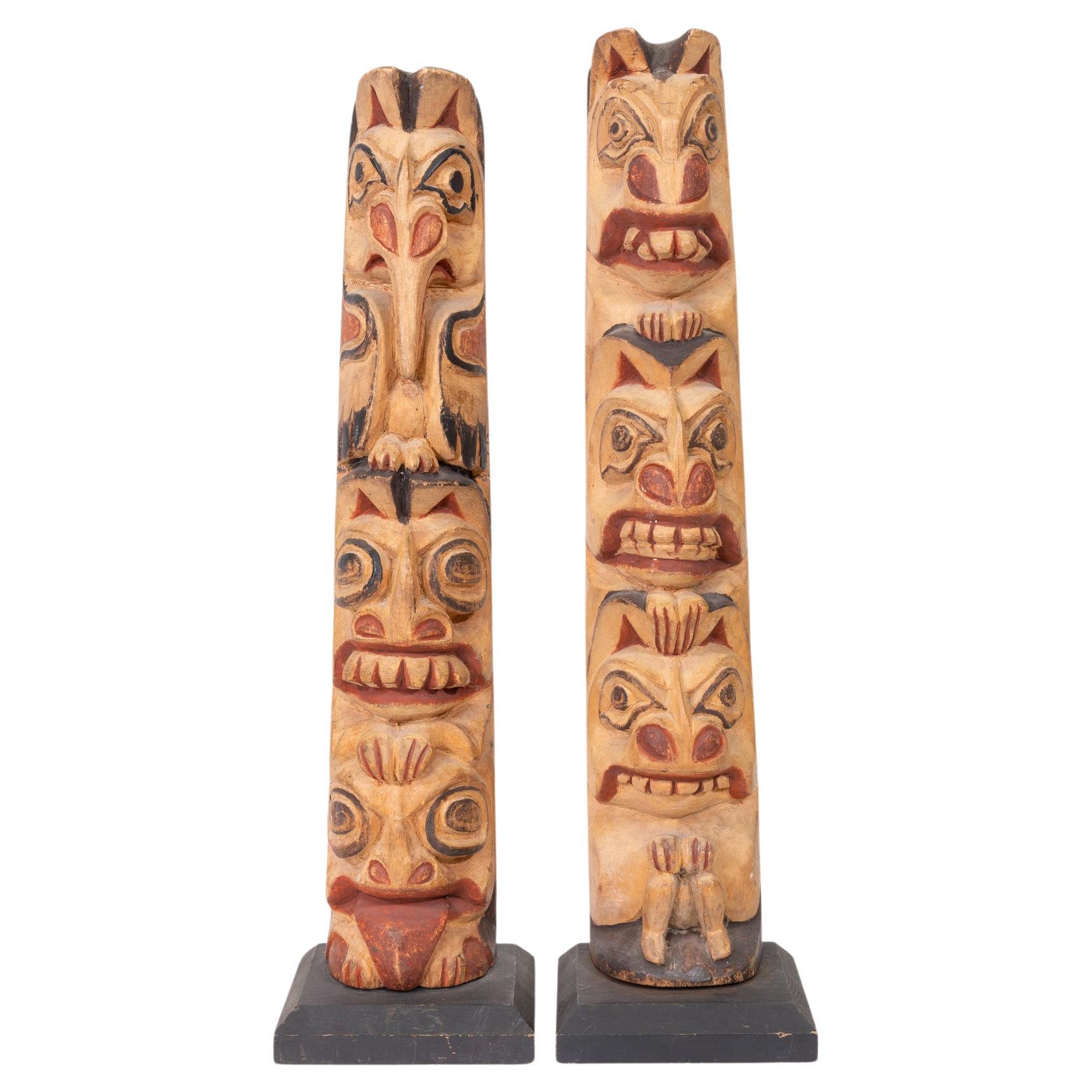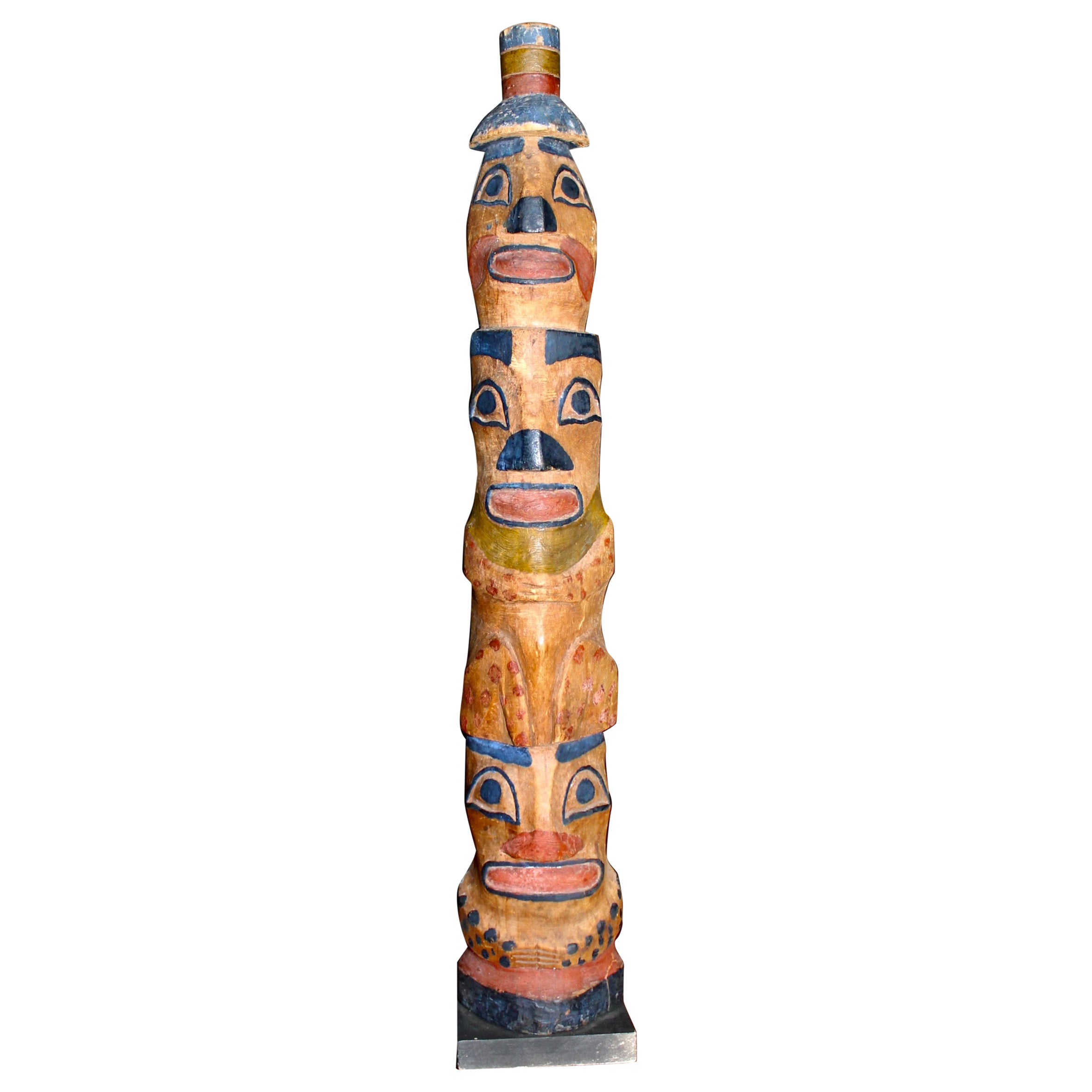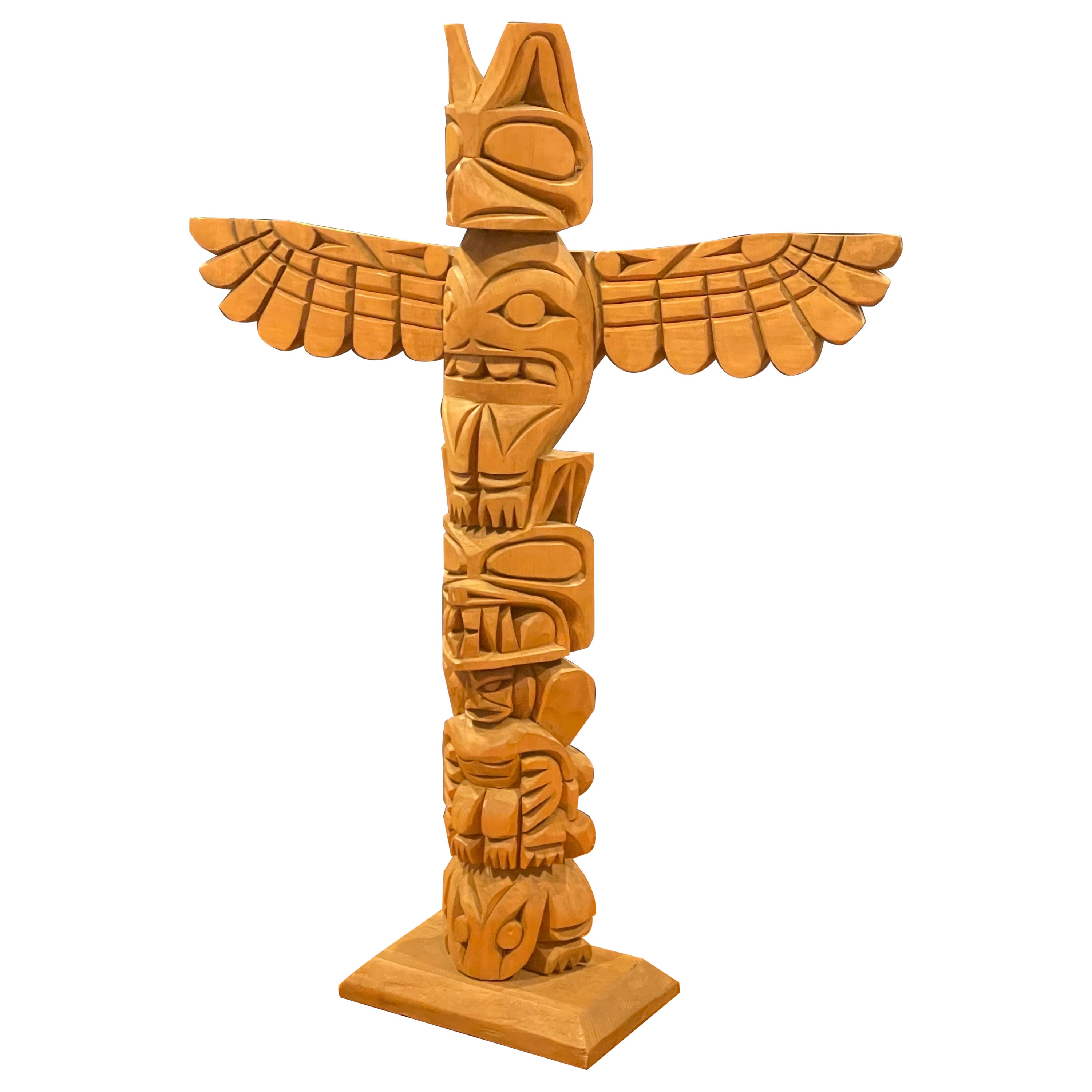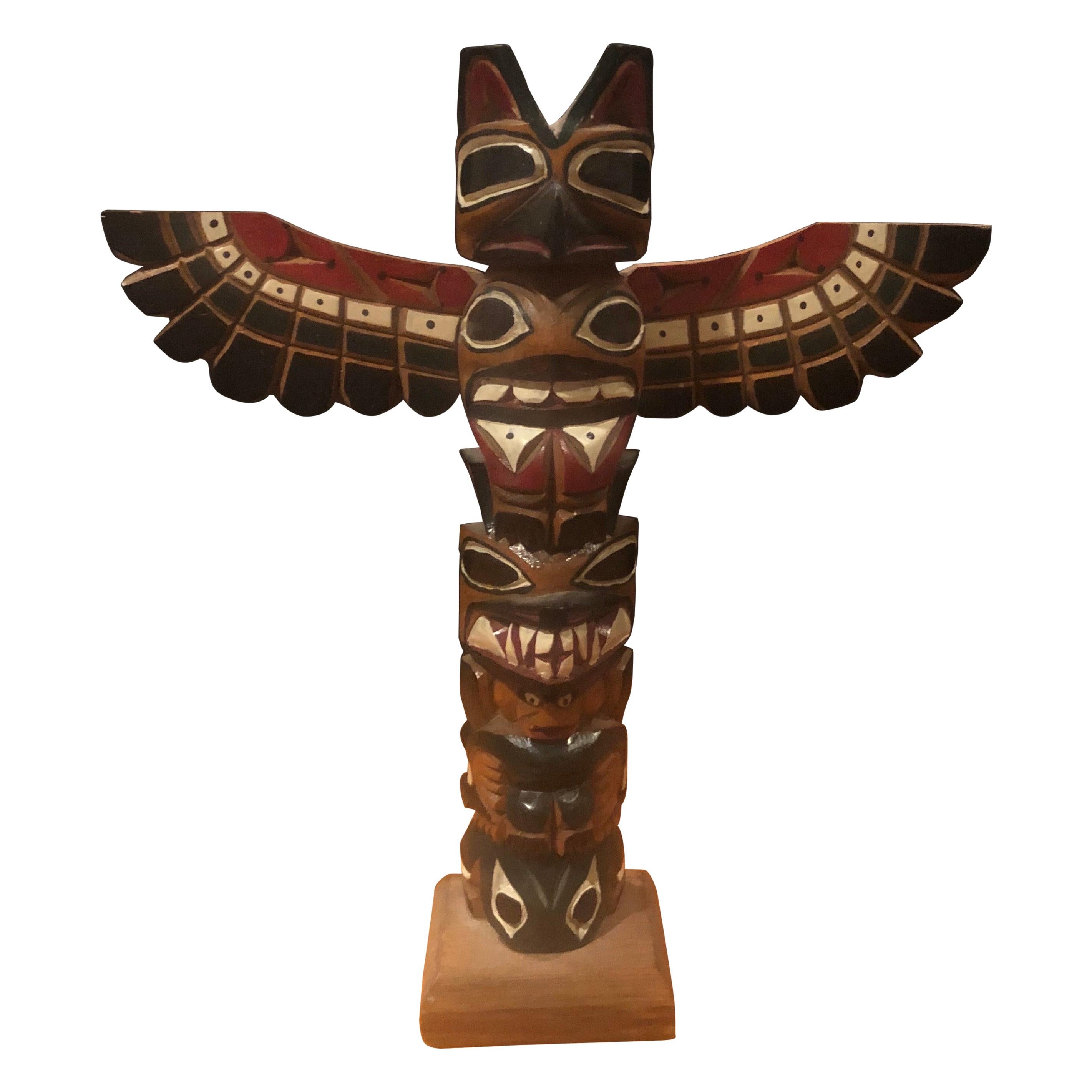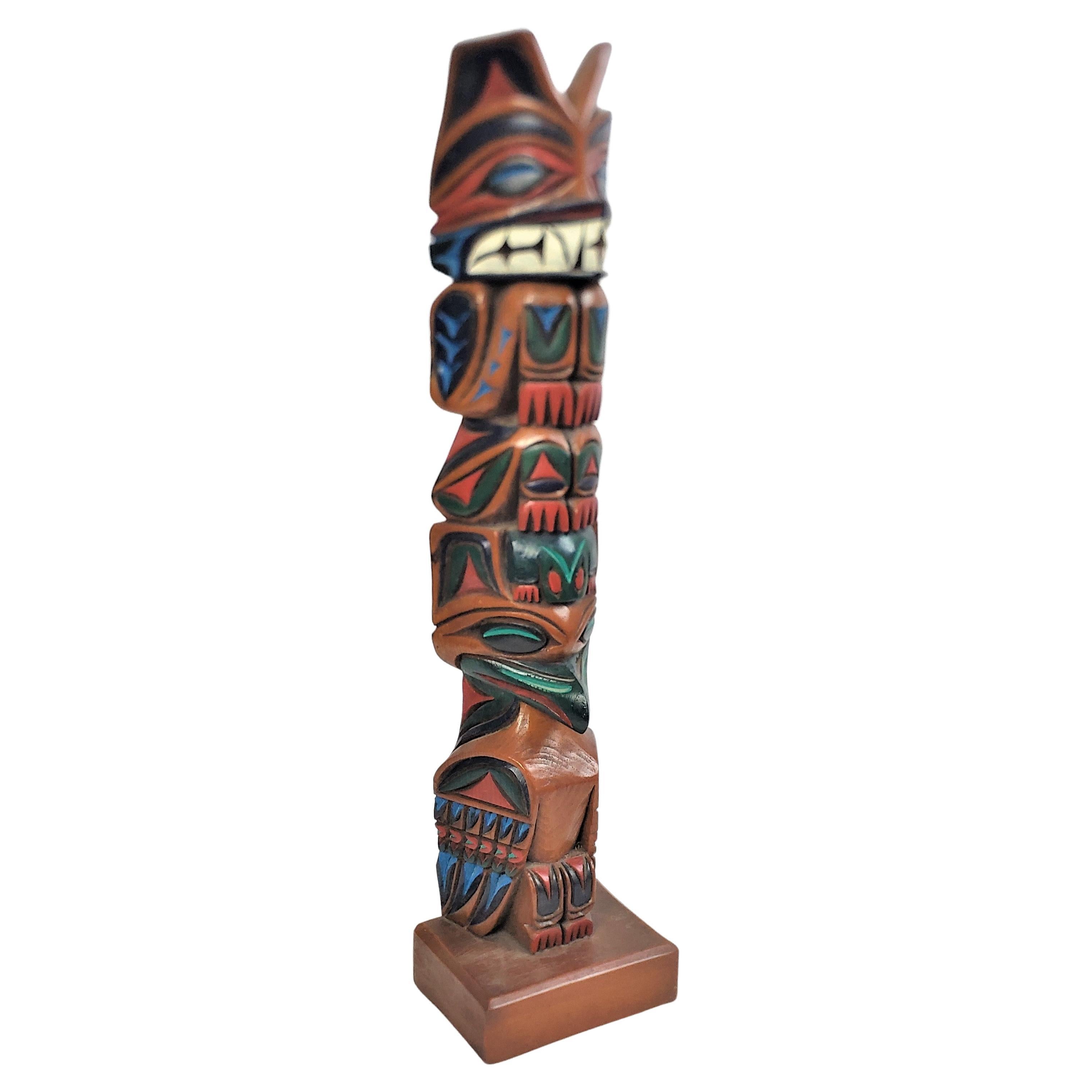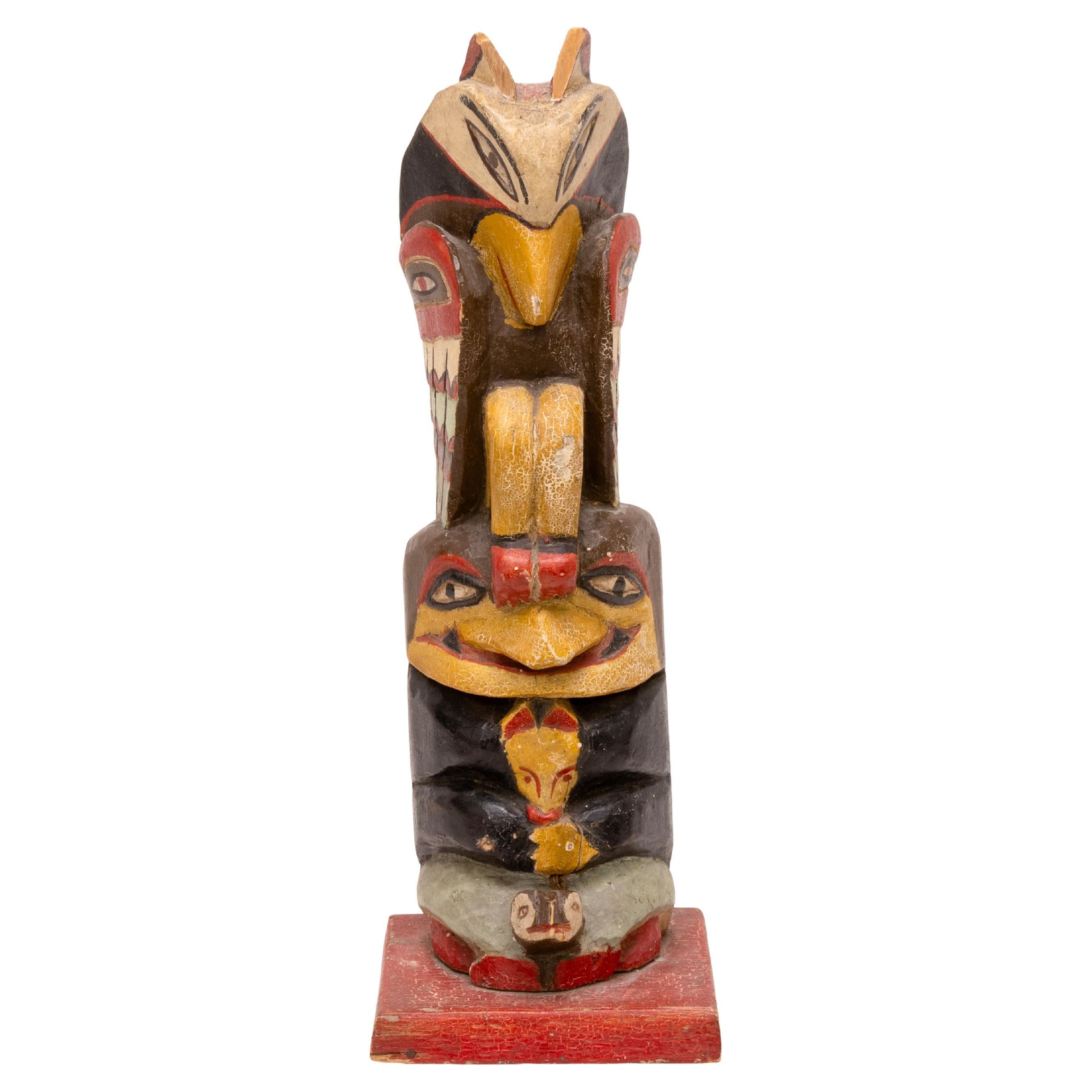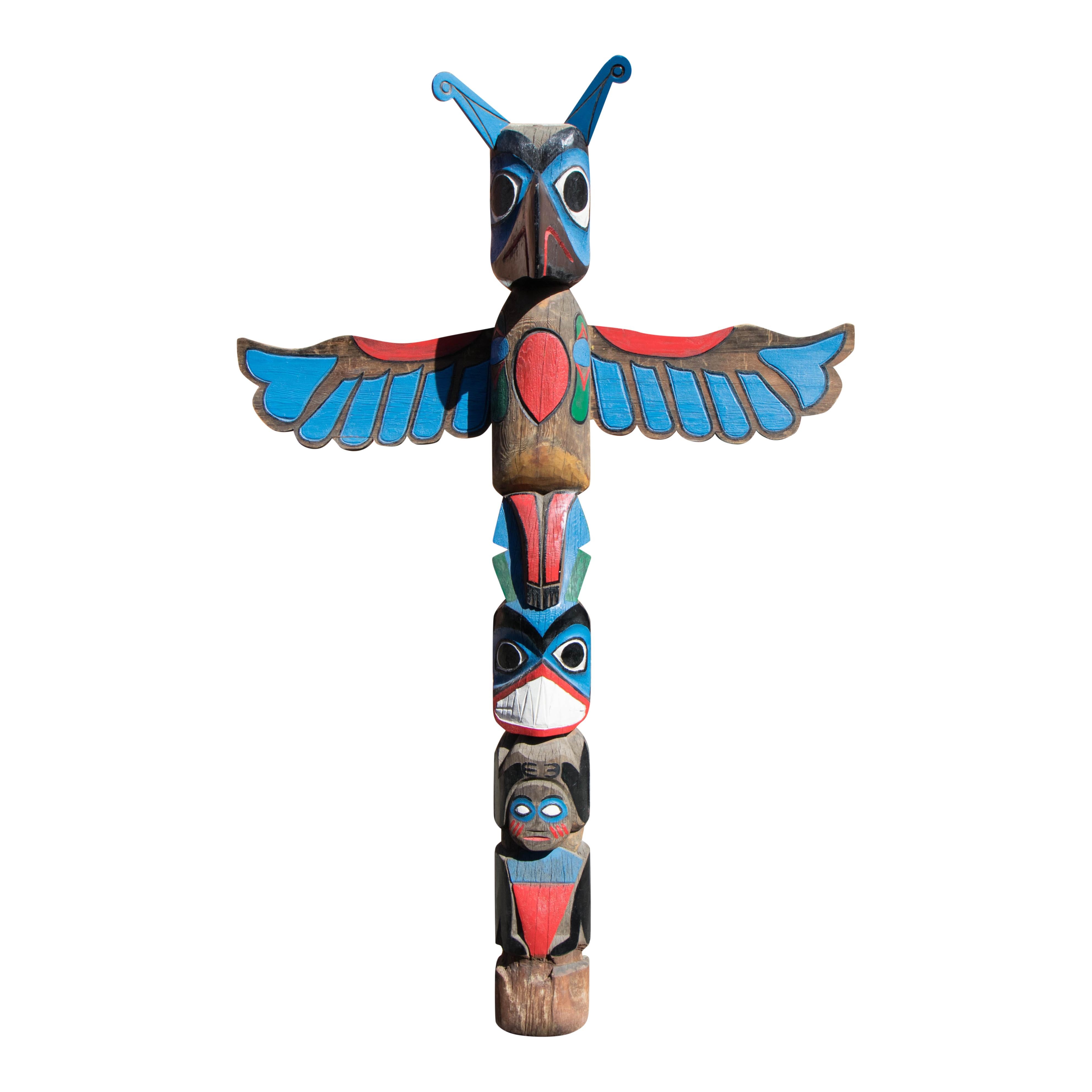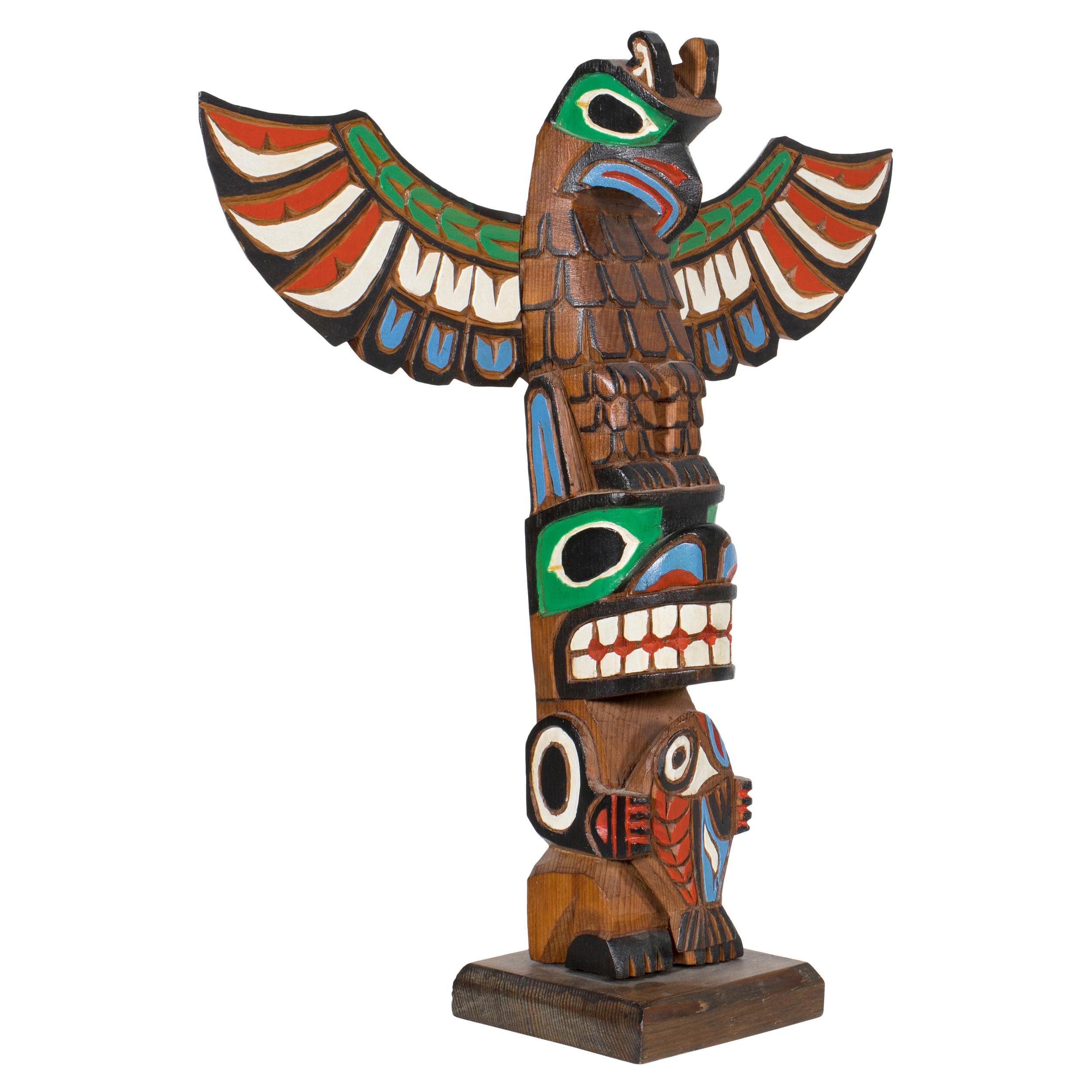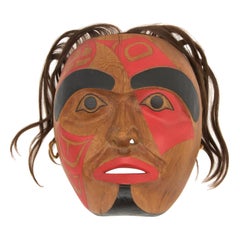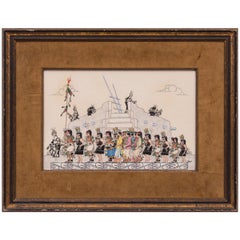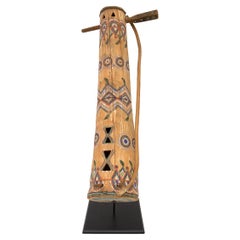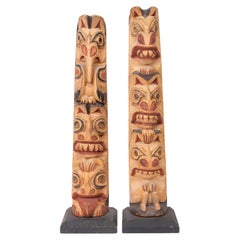
Shark Mother Totem Pole, 1960s-1970s Northwest Coast Carved Wood by Duane Pasco
View Similar Items
Video Loading
Want more images or videos?
Request additional images or videos from the seller
1 of 12
Shark Mother Totem Pole, 1960s-1970s Northwest Coast Carved Wood by Duane Pasco
Price:$17,500
$19,995List Price
About the Item
- Creator:Duane Pasco (Artist)
- Dimensions:Height: 96 in (243.84 cm)Width: 23.5 in (59.69 cm)Depth: 10.5 in (26.67 cm)
- Style:Native American (In the Style Of)
- Materials and Techniques:
- Place of Origin:
- Period:
- Date of Manufacture:circa 1965-1975
- Condition:Wear consistent with age and use. very good vintage condition.
- Seller Location:Denver, CO
- Reference Number:Seller: DCG-253931stDibs: LU1004624943492
About the Seller
5.0
Recognized Seller
These prestigious sellers are industry leaders and represent the highest echelon for item quality and design.
Established in 1979
1stDibs seller since 2013
147 sales on 1stDibs
Typical response time: 10 hours
Authenticity Guarantee
In the unlikely event there’s an issue with an item’s authenticity, contact us within 1 year for a full refund. DetailsMoney-Back Guarantee
If your item is not as described, is damaged in transit, or does not arrive, contact us within 7 days for a full refund. Details24-Hour Cancellation
You have a 24-hour grace period in which to reconsider your purchase, with no questions asked.Vetted Professional Sellers
Our world-class sellers must adhere to strict standards for service and quality, maintaining the integrity of our listings.Price-Match Guarantee
If you find that a seller listed the same item for a lower price elsewhere, we’ll match it.Trusted Global Delivery
Our best-in-class carrier network provides specialized shipping options worldwide, including custom delivery.More From This Seller
View All1970s Nootka Totem Pole by Joe David – Hand-Carved Northwest Coast Wood Art
By Native American Art
Located in Denver, CO
This striking Northwest Coast totem pole is an exceptional hand-carved wood sculpture created by renowned Nootka (Nuu-chah-nulth) artist Joe Davi...
Category
Vintage 1970s Canadian Native American Sculptures and Carvings
Materials
Wood
Signed Northwest Coast Killer Whale Mask, Attributed to Johnny Johns
Located in Denver, CO
This striking hand-carved wooden mask from the Pacific Northwest Coast powerfully embodies the rich artistic traditions and cultural symbolism of Indigenous coastal peoples. Featurin...
Category
Mid-20th Century American Native American Tribal Art
Materials
Bentwood, Wood
Pueblo Harvest Dance, vintage Painting by Jose Roybal (San Ildefonso Pueblo)
By Jose Roybal
Located in Denver, CO
An original watercolor painting by San Ildefonso (Pueblo) Native American artist, Jose Roybal (1922-1978) depicting the Pueblo Harvest Dance. Presented in ...
Category
Vintage 1970s American Native American Paintings
Materials
Paper
$2,600 Sale Price
60% Off
Early 20th C. Western Apache Wooden Fiddle by Amos Gustina with Display Stand
By Amos Gustina
Located in Denver, CO
This rare and finely handcrafted early 20th-century Apache wooden fiddle, or tsii'edo'a'tl—meaning “wood that sings” in Apache—is a striking example of Native American musical crafts...
Category
Early 20th Century American Native American Musical Instruments
Materials
Other
Original Large Painting, Native American Ledger Drawing Style by Randy Lee White
Located in Denver, CO
Original painting by Randy Lee White Native American Indian ledger style in acrylic on canvas with assemblage including feather and wood. Wrapped canva...
Category
20th Century American Native American Paintings
Materials
Acrylic
$2,175 Sale Price
51% Off
20th C. Native American Plains Roach Headdress, Traditional Regalia
Located in Denver, CO
A striking 20th-century Native American Plains Indian roach headdress, also known as a hair ornament, traditionally worn during dances and ceremonies. Thi...
Category
Antique 1880s American Native American Native American Objects
Materials
Fur
You May Also Like
Pair Northwest Coast Cedar Totems
Located in Coeur d'Alene, ID
Northwest coast cedar TOTEM. Signed in pencil on back, "Susan Peters." We assume a former owner. Base is contemporary, almost matching totems. Carved o...
Category
Antique Late 19th Century American Native American Sculptures and Carvings
Materials
Cedar
Northwest Coast Bella Bella Carved Totem Pole
By Native American Art
Located in Coeur d'Alene, ID
Northwest Coast Bella Bella totem pole. Portraying three finely carved masks above a bear with elongated tongue wrapping around face. Painted in colors of red, blue and black on natu...
Category
Early 20th Century American Native American Native American Objects
Materials
Wood, Paint
Totem Pole Model Nootka, Northwest Coast
Located in Sharon, CT
Rare, good sized Totem Model. Untouched, original non commercial paint.
Category
Antique Late 19th Century American Native American Native American Objects
Materials
Wood
John Williams Signed Indigenous American West Coast Haida Styled Totem Pole
Located in Hamilton, Ontario
This Indigenous American totem pole was done by the renowned master carver John T. Williams of the United States in approximately 1960 in his signa...
Category
Mid-20th Century American Native American Native American Objects
Materials
Cedar
Nuu-chah-nulth Northwest Coast Hand Carved Wood Totem Pole by Ray Williams
Located in San Diego, CA
A fine example of a Nuu-chah-nulth northwest coast hand carved wood TOTEM pole by master carver Ray Williams, circa 1960s. Williams was the son of famed c...
Category
Mid-20th Century Canadian Native American Native American Objects
Materials
Wood, Paint
$600 Sale Price
20% Off
Nuu-chah-nulth Northwest Coast Hand Carved Wood TOTEM Pole by Ray Williams
Located in San Diego, CA
A fine example attributed to master Nuu-chah-nulth carver Ray Williams, circa 1960s. Ray Williams was the son of famed carver Sam Williams who started car...
Category
Mid-20th Century Canadian Native American Native American Objects
Materials
Wood, Paint
$600 Sale Price
20% Off
Recently Viewed
View AllMore Ways To Browse
Adze Used
Totem Pacific Northwest
Vintage Hand Adze
Bauhaus Style Side Table
Brazilian Modern Table Marble
Bronze Drink Table
Bronze Tree Table
Capri Furniture
Chair Leather 70s
Console Table Mexico
Copper Outdoor Wall Sconces
Crystal Bowl Set
Czech Tree
Embroidered Wall Panels
Extinct Animal
Florentine Furniture Table
French Gilt Bronze Centerpiece
French Mirror Coffee Table

